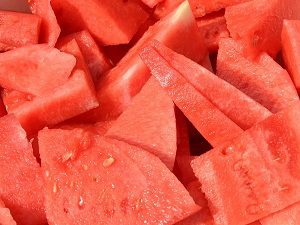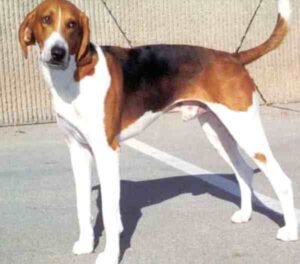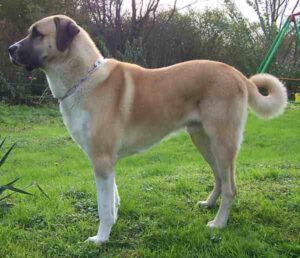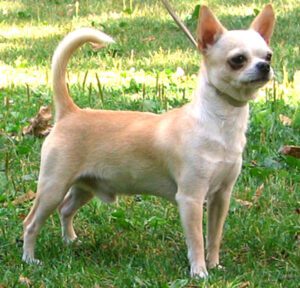The Boxer dog is a beautiful, short-haired and medium to large sized breed of working dog. It was originally bred to be a medium-sized guard dog. But most of the Boxers find homes as loving family companions. They are also known as German Boxer and Deutscher Boxer.
The Boxer dog breed was developed in Germany. It was bred from the Old English Bulldog and the now extinct Bullenbeisser which became extinct by crossbreeding rather than by a decadence of the breed.
The Bullenbeisser was used as a hunting dog for centuries for hunting bear, wild boar and deer. Their task was to catch and hold the prey until hunters arrived. Over time Bullenbeissers lost their jobs on estates and began to be used by farmers and butchers for guarding and driving cattle.
The Boxer is part of the Molosser group. This group is a category of solidity built, large dog breeds that all descend from the same common ancestor, the large shepherd dog known as Molossus.
The Boxer dog we know today was developed in the late 19th Century. A Munich man named Georg Alt bred a brindle-colored female Bullenbeisser named Flora with a local dog of unknown origin. In the liter was a fawn-and-white male that was named Lechner’s Box. This is believed to be the start of the line that would become the Boxer we know today.
The first Boxer club was founded in 1895, with Boxers being first exhibited in a dog show for St. Bernards in Munich the next year.
Based on AKC statistics on 2013, Boxers held steady as the seventh-most popular breed of dog in the United States for the fourth consecutive year. However, according to the AKC’s website, the Boxer is now the eleventh-most popular dog breed in the United States.[1]
Boxer Dog Characteristics
The Boxer dogs are very beautiful, and are medium to large in size. They have smooth and tight-fitting coat. Their common coat colors are fawn, brindled, or white, with or without white markings.
The Boxers have broad and short skulls, a square muzzle, an underbite, very strong jaws and a powerful bite which is ideal for hanging on to large prey.
The head is the most distinctive feature of the Boxer dog. The head must be in perfect proportion to the body and above all it must never be too light.
The Boxer dogs are medium to large in size. Average body height of the mature dog is between 22 and 25 inches at the withers for the males, and between 21 and 24 inches for the females. Average live body weight of the mature dog is between 29 and 34 kg for males, and between 25 and 32 kg for the females.

Temperament
As the Boxer dogs are guard dogs, so they are alert and watchful. When they are not clowning for you, they are dignified and self-assured. They are generally playful and patient with children. Strangers are greeted with a wary attitude, but they respond politely to friendly people. They are aggressive only in defense of their family and home.
Like other dog breeds, temperament of the Boxer dog is affected by a number of factors, including heredity, training and socialization. Puppies with nice temperaments are curious and playful, willing to approach people and be held by them.
Like other dogs, the Boxers also need early socialization. Exposure to many different people, sight, sounds and experiences are important, especially when they are young. Socialization helps to ensure that your Boxer puppy grows up to be a well-rounded, outgoing, friendly dog and stays that way.
Lifespan
Average lifespan of the Boxer dogs is between 9 and 15 years.
Feeding
How much a mature dog eats depends on it’s size, age, build, metabolism and activity level. Dogs are individuals, just like people, and they don’t all need the same amount of food.
The Boxer dogs are medium in size and are very active. So, their diet should be formulated for a medium sized breed with high exercise needs. You can consult with a vet in your area for better feeding recommendations.
Caring
Taking good care of the animals is very important for raising Boxer dogs. They are actually house dogs. Their short noses and short coats make them unsuited for living outdoors. Although, they will enjoy having a fenced yard to play in.
The Boxer dogs love to play. They need regular exercise for keeping their muscles toned and keeping them satisfied. You can plan for playing with them or walking them at least twice a day for half an hour.
Training is essential for the Boxer dogs. They are so big and strong that they can accidentally hurt people by knocking them over if they don’t learn to control their actions.
Health
The Boxer dogs are generally healthy. But like all other dog breeds, they are also prone to certain health conditions.
Their common health problems include cancers, heart conditions such as aortic stenosis and arrhythmogenic right ventricular cardiomyopathy (the so-called “Boxer cardiomyopathy”), hypothyroidism, hip dysplasia, and degenerative myelopathy and epilepsy. Always try to keep good contact with a vet in your area.
| Breed Name | Boxer |
| Other Names | Also known as German Boxer and Deutscher Boxer |
| Breed Size | Medium to large |
| Height | Between 22 and 25 inches at the withers for the males, and between 21 and 24 inches for the females |
| Weight | Between 29 and 34 kg for males, and between 25 and 32 kg for the females |
| Good as pets | Yes |
| Climate Tolerance | All climates |
| Color | Fawn or brindle, and white |
| Lifespan | Between 9 and 15 years |
| Good for children | Yes |
| Rarity | Common |
| Country of Origin | Germany |






